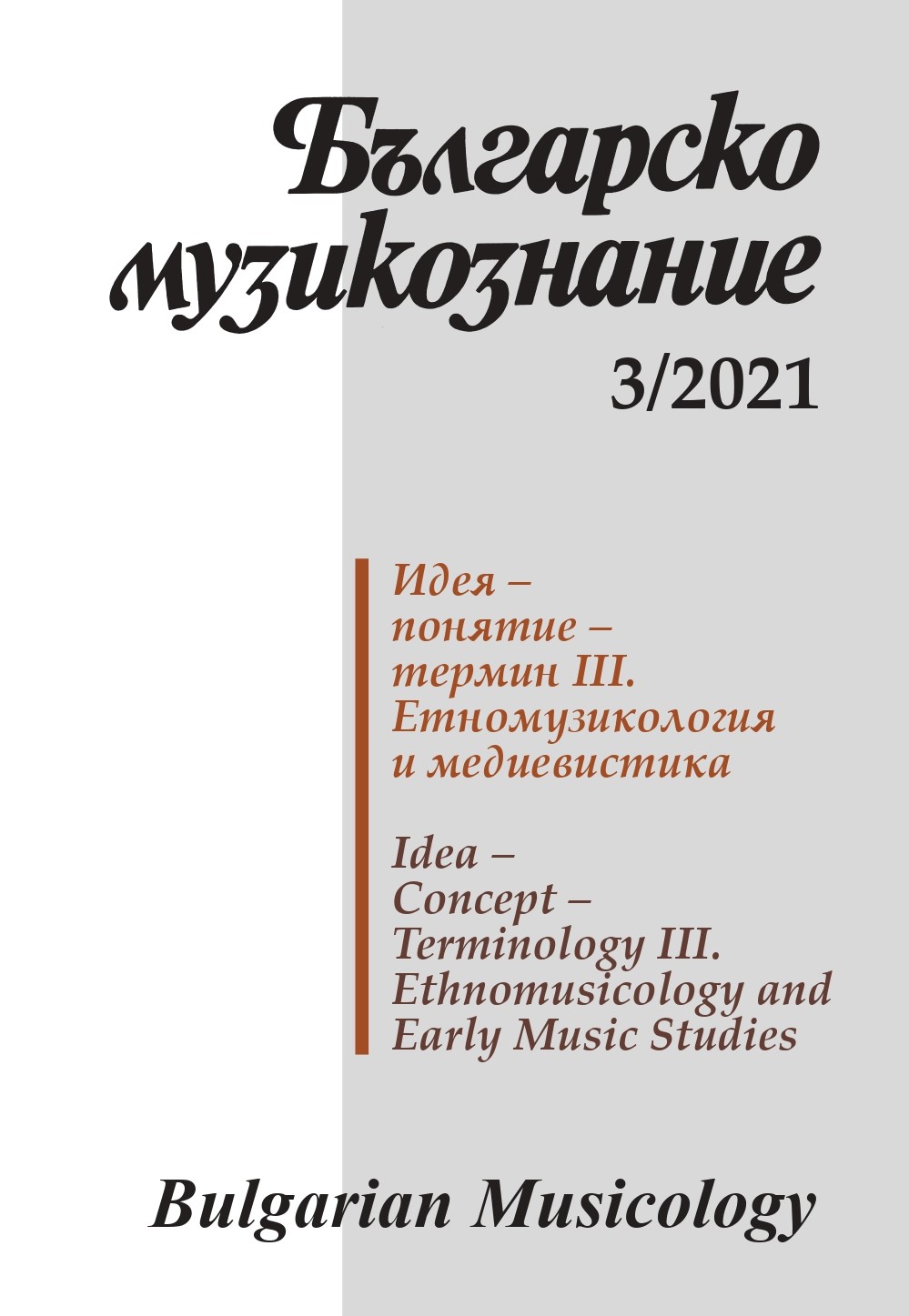Видове музикални танцови форми през XVI век: опит за дефиниране (върху Арбо, Морли и Преториус)
Varieties of Dance Music Forms in the 16th Century: An Attempt at Definition (after Arbeau, Morley and Praetorius)
Author(s): Yavor GenovSubject(s): Fine Arts / Performing Arts, Music
Published by: Институт за изследване на изкуствата, Българска академия на науките
Keywords: Renaissance music; Dance; Terms; Instrumental music; Lute
Summary/Abstract: Dance forms emerged as one of the three main instrumental genres in the 16th century. Their significant part in the repertory is attested to by the very first prints (particularly for lute) known today. On the border between the 15th and 16th centuries both instrumental music and choreography enjoyed their own development, authoritative figures and theory, but at the same time certain intersection points between them were inevitable. On one hand, music was assigned the task of providing dance practice with metrorythmic, melodic and structural frames. On the other, players used the formal structures of dance music for experiments with compositional, improvisational, and technical potentials and limitations. A well-known fact is that dance forms became fully independent and purely instrumental compositions (as part of suites and sonatas) in the 17th and 18th centuries. In the previous century, however, their origin, function, context and dissemination had a story of its own in terms of each individual type of dance. The present paper aims to reveal some reflections on the dance forms in the 16th century by contemporaries of the music itself. It seems that the treatises of the most prominent dance masters of the period – Arbeau, Caroso and Negri, offer a somewhat scanty account of their musical aspects rather than more detailed information about steps, space usage, etc. For the purpose of this study Arbeau emerges as the most informative source among his colleagues. Apart from his testimony, I focus my attention on the significantly more exhaustive data provided by Thomas Morley and Michael Praetorius in their musical treatises Plaine and Easie Introduction […], 1597 and Syntagma Musicum, 1619. Thus, I endeavour to shed light on dance form concepts in the closest possible relation to their origin and function as witnessed by some of the most respected authorities of the age.
Journal: Българско музикознание
- Issue Year: 2021
- Issue No: 3
- Page Range: 105-125
- Page Count: 21
- Language: Bulgarian
- Content File-PDF

